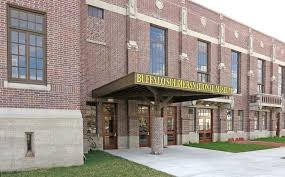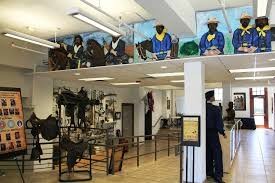Buffalo Soldiers National Museum
Introduction
Text-to-speech Audio
Images
Buffalo Soldiers National Museum, Houston,TX

Buffalo Soldiers National Museum exhibition room.

Backstory and Context
Text-to-speech Audio
Founded in 2001, by Captain Paul J. Matthews, a Vietnam veteran and African American military historian, the museum is home to hundreds of years of history—not only African American history but also American history. Formerly located in a building on Southmore Boulevard, the museum quickly outgrew its space and was relocated in the nearby former Light Guard Armory Building.
The museum was named after the first African Americans who served in the peacetime army of the United States as segregated units in the western part of the United States in 1866. Legislation was used to create six African American army units and were identified as the 9th and 10th cavalry. All army totals consisted of about 1000 soldiers, to help rebuild the country after the Civil War and to patrol the remote western frontier.They were given the name Buffalo Soldiers by Native Americans out of respect for their fierce fighting ability. Over time, the term Buffalo Soldier was applied to all African-American soldiers. Their actions on the western front live on in the halls of the Buffalo Soldiers National Museum.
The main charge of the buffalo soldiers was to protect the settlers throughout the west and build brand new infrastructure to expand flourishing settlements. Their name originated from the curly hair and their fierce, brave nature many of the soldiers had that resembled much of a buffalo. The name around the time represented a form of honor.
Sources
"A Brief History of the Buffalo Soldiers." Buffalo Soldiers of the American West. Accessed February 22, 2015. http://www.buffalosoldiers-amwest.org/history.htm.
"Buffalo Soldiers: Discovering Heritage on the Texas Frontier Educator’s Guide." Institute of Texan Cultures. 2010. http://www.texancultures.com/assets/1/15/Buffalo_Soldiers_Educator_Guide.pdf
